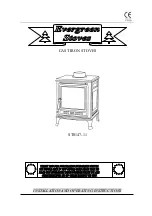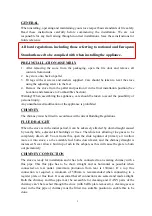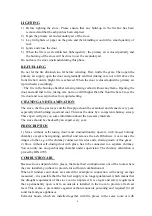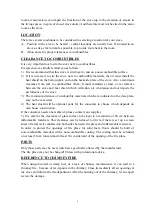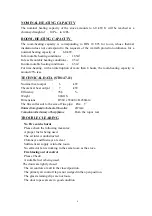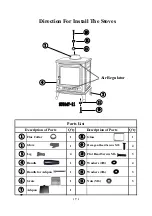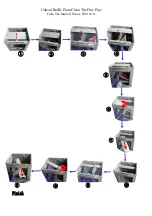
3
AIR SUPPLY
When you install the stove, you must observe the relevant statutory regulations. It is
essential for the appliance to have a sufficient air supply for combustion and ventilation. A
permanently open air vent to an exterior wall within the room is required (formula to work
out air vent can be found in Building Control Document J)
FLOOR PROTECTION
The appliance shall be installed on floors with an adequate load-bearing capacity. If an
existing construction doesn’t meet this prerequisite, suitable measures (e.g. load distributing
plate) shall be taken to achieve it.
It is recommended that this appliance is installed on a solid, level, non combustible hearth
conforming to current Building Regulations.
SAFETY ADVICE
Warning! When the appliance is operating, parts of the appliance-- especially the external
surfaces (e.g. fire door, glass, flue pipe and front wall) will be very hot to touch while in
operation. Care should be taken, e.g. protective glove should be used in operation.
This appliance is hot while in operation and retains its heat for a long period of time after use.
Children, elderly or infirm persons should be supervised at all times and should not be
allowed to touch the hot working surface while in use or until the appliance has thoroughly
cooled.
RECOMMENDED FUELS
This appliance has been tested with seasoned wood logs and brown coal. It only allows the
use of wood with a length of 30 cm and a diameter of 10 cm maximum.
We recommend you only use air dried wood as fuels. Air dried wood with max. 20% water
can be reached by a drying time of at least one-year (softwood) and /or two –years
(hardwood). Otherwise, wet or unseasoned wood will cause tar deposits in the stove and
unsatisfactory heat output will occur.
The burning of waste and especially synthetic material is not allowed. In addition, it may
cause health damage, and cause damage to the fire box. It will also create unpleasant smells,
and make neighbourhood complaints.
Good quality hard wood will burn overnight under suitable conditions.
Note brown coal and smokeless fuel should also be stored dry and ventilated.
HEATING UP
On initial firing an unavoidable acrid smell will occur. This is the paint curing, and this will
go after the initial firing. During the heating up, the room in which the stove is installed
should be well ventilated. As soon as the kindling material is burned well, further fuel may
put on.
FUELS TO AVOID
Never use alcohol, gasoline or other combustible liquid to start or freshen up a fire in this
heater.

